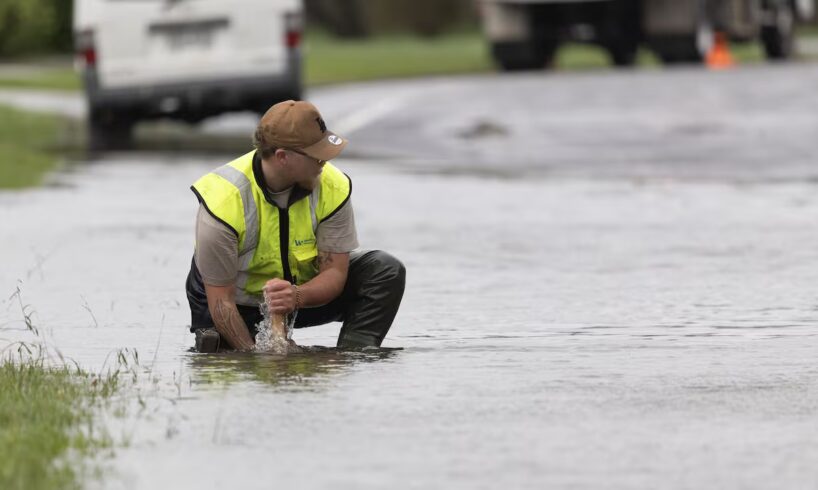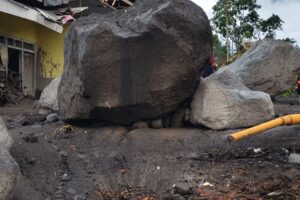
Reinsurer Lloyds rated New Zealand the second most at-risk country in the world for natural hazards in 2018. New research published by Earth Sciences New Zealand showed that 750,000 New Zealanders live in locations exposed to flooding from one-in-100-year rainfall flooding events. Around $235 billion worth of buildings across the country are exposed, along with 26,800km of roads, 141,00km of stormwater pipeline and 21% of electricity networks. These numbers increase with each degree of temperature rise.
Facing this level of vulnerability, and already having a substantial infrastructure deficit, as a country we will need to make strategic choices about where and how we invest. The intensification of weather patterns can be sobering, but inaction is not an option.
Everything is connected
The impacts of climate change are multi-layered and overlapping, yet our current approach to resilience is often singular, focusing on specific sectors or assets. In reality, infrastructure is deeply interconnected – power, water, transport, hospitals, schools – yet planning and investment often happen in isolation. For example, a hospital may be built to the highest seismic standards; however, it relies on transport connections for access. If those connections are disrupted, the hospital’s ability to serve the community is compromised.
Considering assets singularly also increases the risk of creating a “titanium link in a paper chain” – that is, a single asset or section of network built to a significantly higher standard than those around it. In that scenario, is the enhanced resilience of a single asset delivering real value? With limited funds, we need to weigh up all investments to find the most sensible long-term solutions.
A nation-wide and region-wide approach to resilience could help. This begins with adopting ecosystem thinking – recognising that assets do not exist in isolation but interact in complex ways and are in service to communities. For example, a facility may depend on a reliable energy supply, while a business might rely on transport networks to function effectively. Understanding these interdependencies ensures that resilience planning reflects the real-world connections between infrastructure systems.
Equally important is understanding exposure. Data can help identify which assets are most at risk and guide decisions about whether to retrofit, protect, or consider alternative options such as retreat. This requires taking a broad view of an asset’s value, considering factors such as its role in generating economic activity, the number of people that the infrastructure serves, and its criticality within the wider network.
Finally, improving prioritisation is essential. Councils and public sector asset owners face difficult choices amid limited budgets and rising community expectations. Without a clear strategy, there is a risk of inefficient investments creating stranded assets. A structured approach to prioritisation ensures that resources are directed toward solutions that deliver the greatest long-term benefit and value to communities and asset owners.
Planning for the future
Resilience to climate impacts is a complex challenge for businesses, communities, and government, with no simple solution. However, part of the solution for government and businesses lies in effective transition planning. The first step is to assess future scenarios and understand what they might mean for your operations and assets. This includes considering climate impacts such as rising temperatures and sea levels, alongside broader issues like geopolitical risks and technological change.
Leveraging data is critical. Organisations need to evaluate the current state of their assets and the potential impacts of climate change. It’s not enough to just consider your own assets in these evaluations, but also how your assets interact with others.
Finally, engaging with communities is vital. Transparency about the scale of risk and potential consequences – such as rising insurance premiums or increased rates – empowers communities to participate in decisions that affect them. After Cyclone Gabrielle, for example, communities in Hawke’s Bay were involved in discussions about whether to repair or replace damaged infrastructure or explore alternative options, all with full visibility of associated costs to enable informed decision-making.
Keeping people front and centre
The resilience challenge is complex; however, if we keep front and centre a simple truth: infrastructure exists to serve people and our communities, that will be key to finding the right solutions. Roads, power networks, hospitals, and schools are not isolated assets; they are interconnected systems that underpin our wellbeing and economic resilience. Yet too often, planning and investment occur in silos, creating vulnerabilities that ripple across communities when one link fails. To respond effectively, we need an ecosystem approach – one that recognises these interdependencies and brings together everybody: the private sector, government, insurers, banks, iwi, and communities.
This collaboration must go beyond technical fixes. It requires shared data, integrated planning, and a willingness to make hard choices about where and how we invest. It also means combining scientific insights with local knowledge, and empowering communities to engage in decisions that impact them.
Liz Root is director, Sustainability & Resilience at Aurecon.





